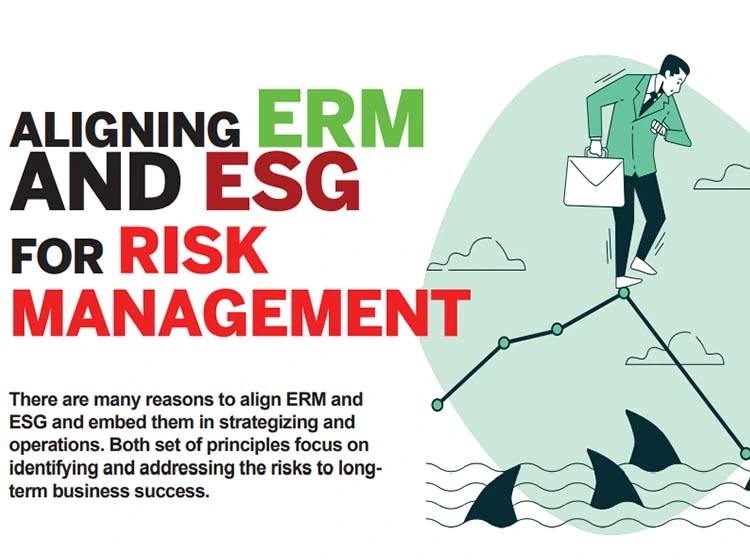Enterprise Risk Management (ERM) is an organization-wide process of identifying and addressing events that may potentially either become operational or strategic risks, or harm opportunities to gain competitive advantage. Environmental, Social, and Governance (ESG) standards also address risks that businesses and investors have an interest in addressing. It therefore makes sense that ERM and ESG are merging, because both processes focus on the identification and assessment of the risks associated with running a business, and the opportunities for managing those risks so they do not interfere with the ability to achieve goals and objectives. The alignment of ERM and ESG is an emerging trend, as companies recognize that issues such as environmental sustainability, social justice, and corporate leadership decision-making and policies contribute to reputational, operational, financial, and investment risks.
ESG AND ERM SHARE STRATEGIC GOALS AROUND RISKS
ESG has been a concept that has been recognized for many years, but its importance to risk management for long-term business sustainability is more recently acknowledged. One of the reasons is institutional investors wanting to assess the risks of ESG factors before making investment decisions regarding the potential harm they can do if not well-managed. For example, what are the risks of experiencing limited natural resources, or of potential climate change effects on business operations? Are corporate values affected, as younger generations of talent consider environmentalism when selecting companies for employment?
A similar perspective is applied to social and governance elements. ESG can lead to positive or negative business impacts, depending on how the related risks are mitigated. For example, Social embraces diversity, equity, and inclusion. Companies that are not diverse, equitable, or inclusive in recruiting, hiring, marketing or governance will experience problems with attracting and retaining top diverse talent. They will also suffer damage to the corporate reputation, and experience less innovation due to a lack of diverse perspectives. ERM is also a process for identifying and responding to risks in a way that minimizes the potential negative impact of those risks on the ability to continue operations. It also helps the organization avoid disruptions, and maximize profits and returns on investments. Bringing ERM and ESG together broadens the scope of strategic risk management, which is important in a business environment continually undergoing disruption and change.
Login Here

